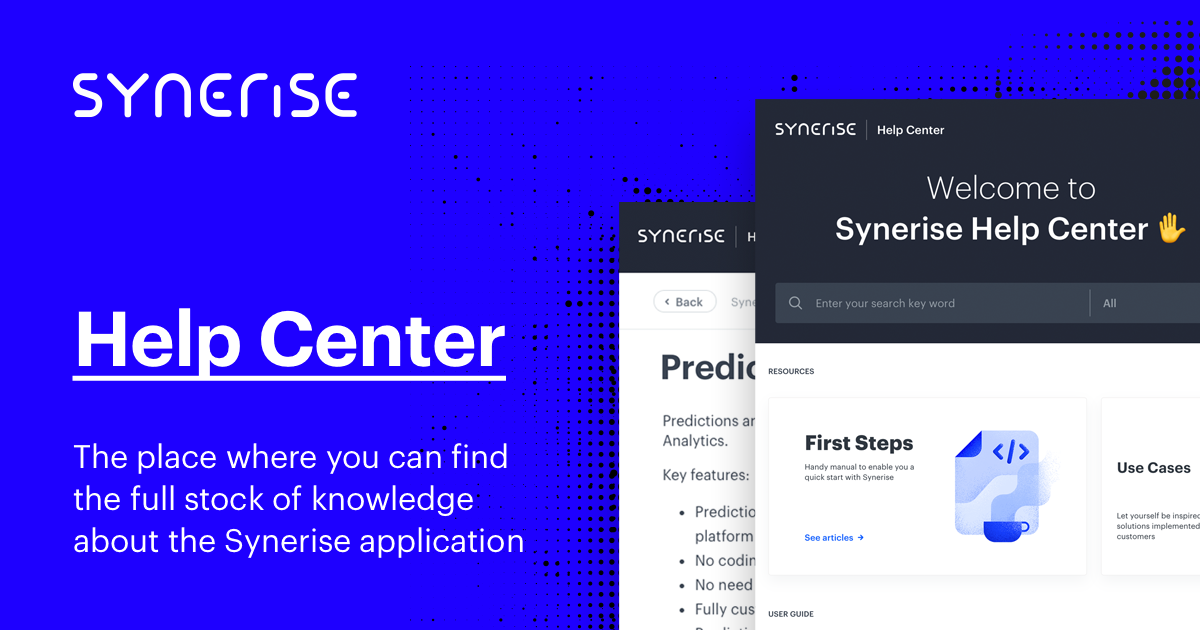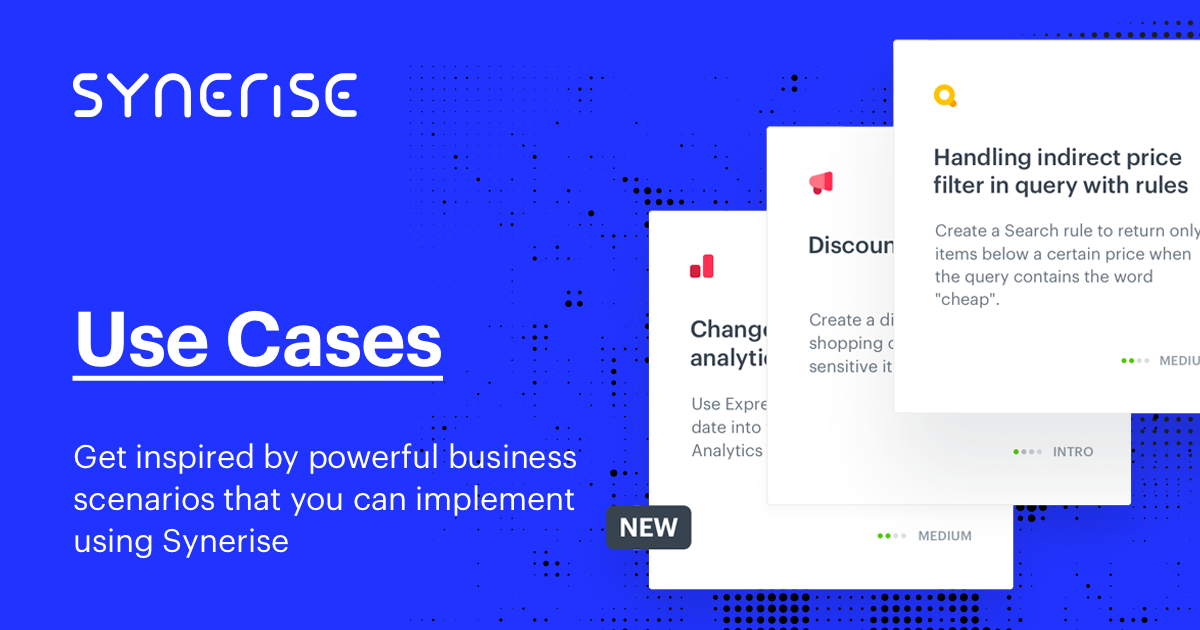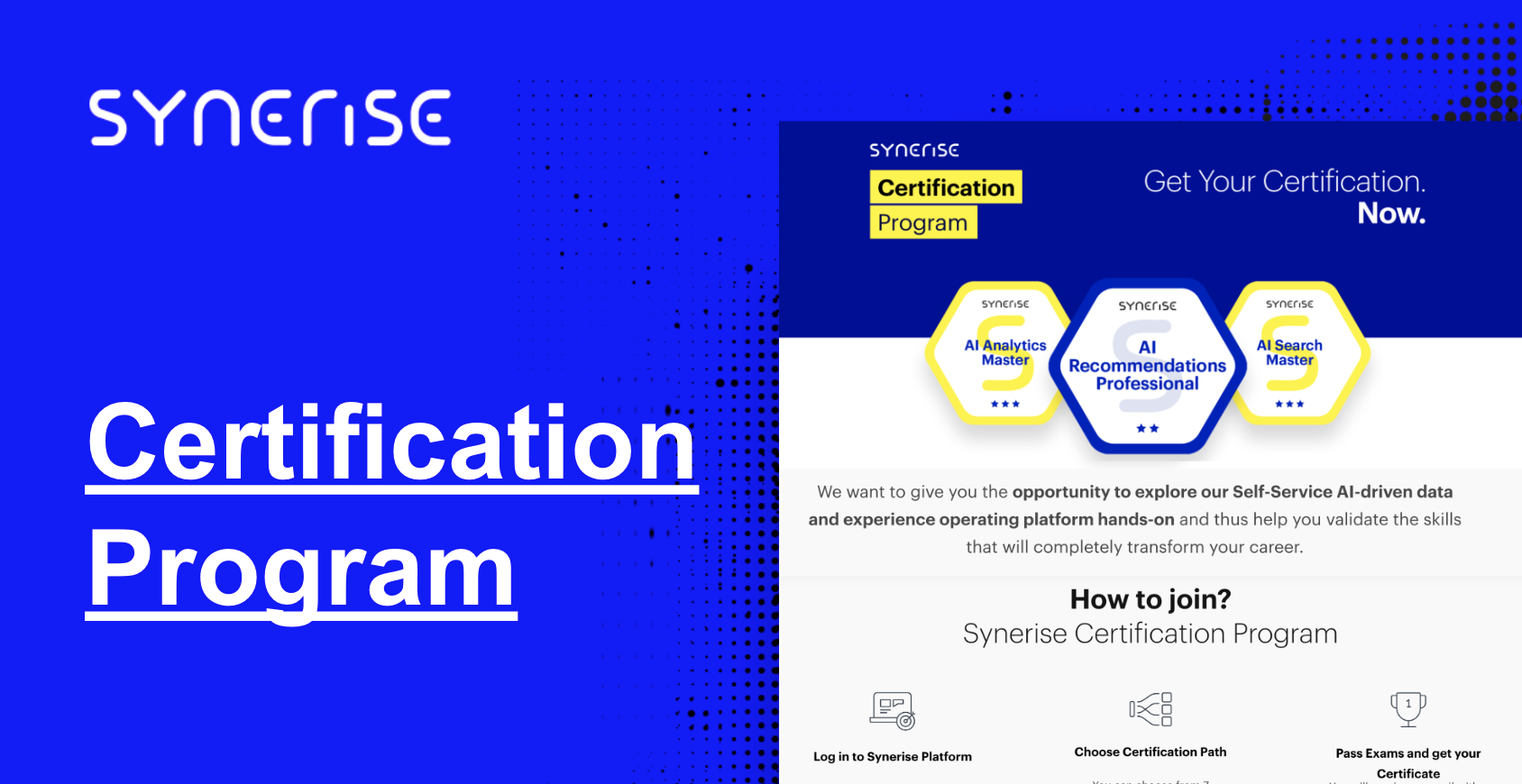STEP 4 Predictions
Introduction
Predictions are a codeless AI-powered tool built on top of Synerise analytics to predict any type of event or action in a customer’s journey.
From this chapter you will learn:
how predictions work,
where to find full predictions documentation.
- Predictions - learn more about Synerise predictions.
Requirements
The following list explains basic requirements necessary to start working with predictions:
- Enable the Predictions module. Decide which of the predictions types you would like to enable:
- Lookalikes
- Custom predictions
- Propensity predictions
Further steps depend on whether your workspace contains the minimum required data.
- Once the set-up is ready, it usually takes a few hours to initialize predictions on your workspace. Once the initialization is done, you can make your first prediction.
- Quick start with predictions - learn more about quick start with Synerise predictions.
Types of predictions
Synerise offers 3 types of predictions, described below.
Custom predictions
You can use the Custom prediction type to predict any type of event or customer’s action that can be calculated in an expression and produce a numerical or 1/0 (true/false) value. Here are a few examples of what you can predict:
- Churn likelihood
- Conversion
- Open rate (OR)
- Click-through rate (CTR)
- Click-to-Open rate (CTOR)
- Who will visit
- Purchases from abandoned basket
- Custom predictions - check the requirements for custom predictions.
Lookalikes predictions
You can use Lookalikes for discovering new segments of customers, extending reach, picking the most promising new comers with regards to their similarity to your best customers. The list contains a few examples of what you can discover:
- Segment of customers likely to convert to your yearly repeating marketing campaign
- The best offline, fresh customers
- Best customers in a specific location
- And many more
- Lookalikes predictions - check the requirements for lookalikes predictions.
Propensity predictions
Propensity predictions let you evaluate how likely customers are to buy products with specific features, such as:
- Brand
- Category
- Color
- And many more
- Propensity predictions - check the requirements for propensity predictions.


